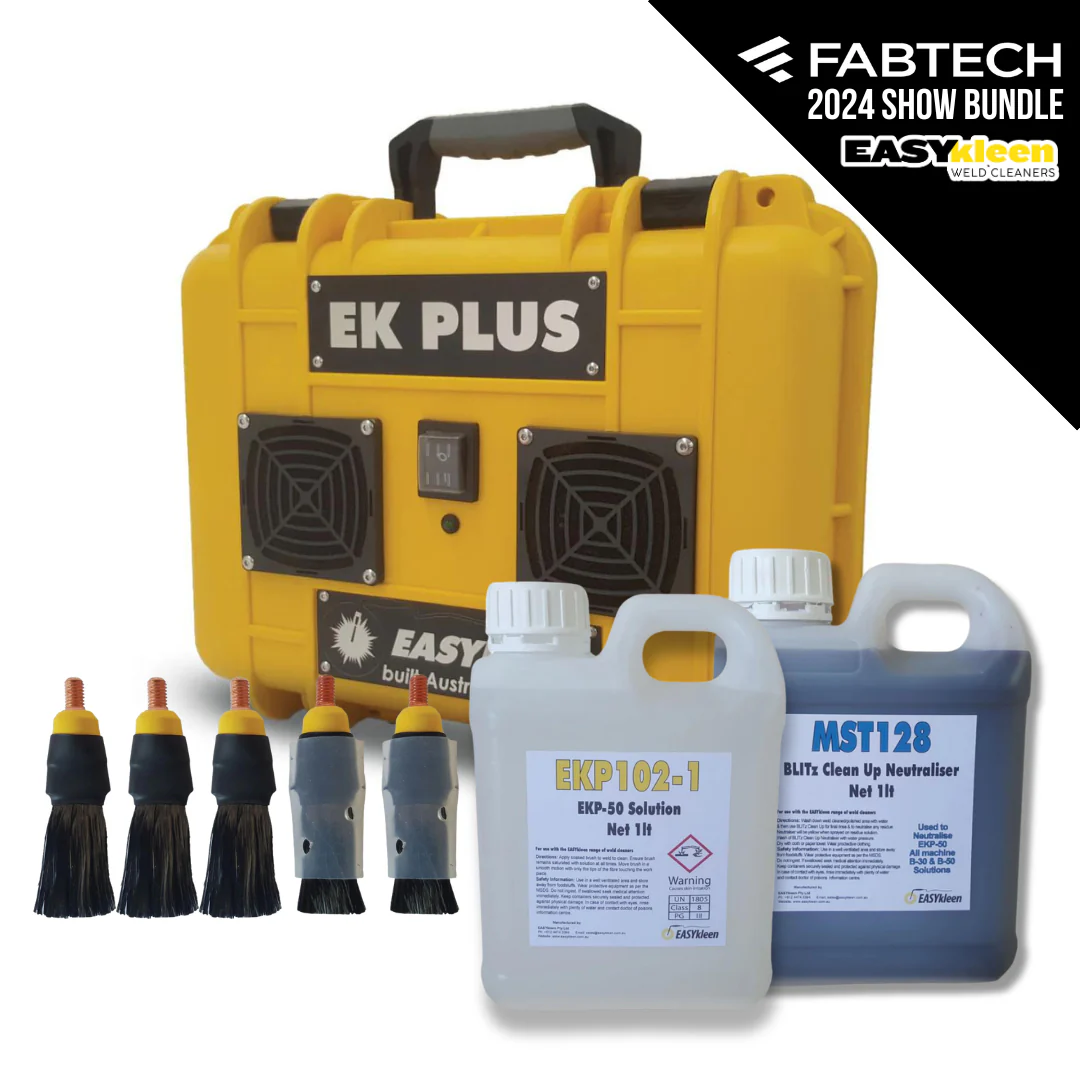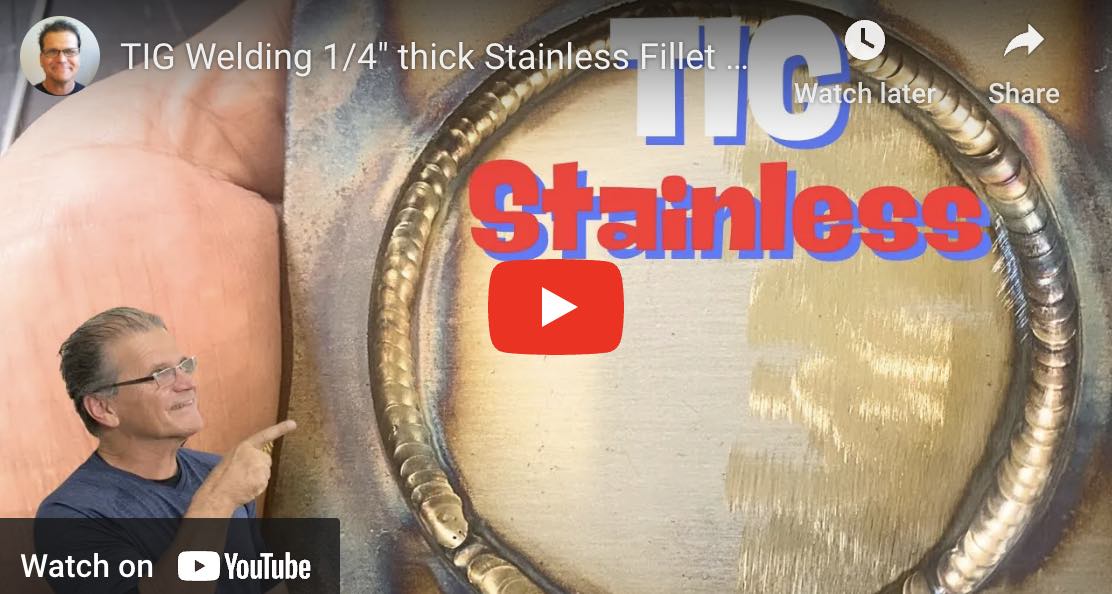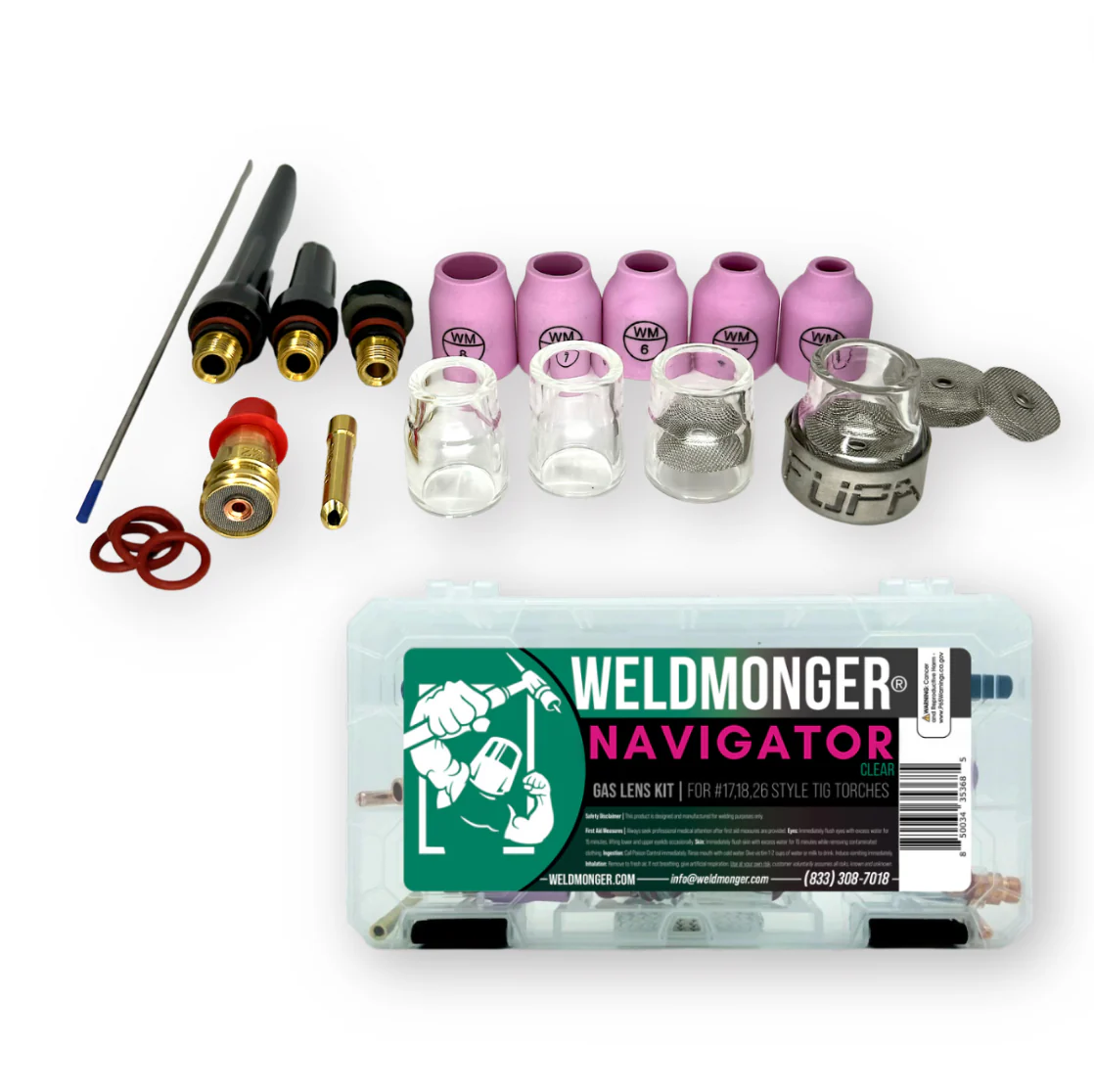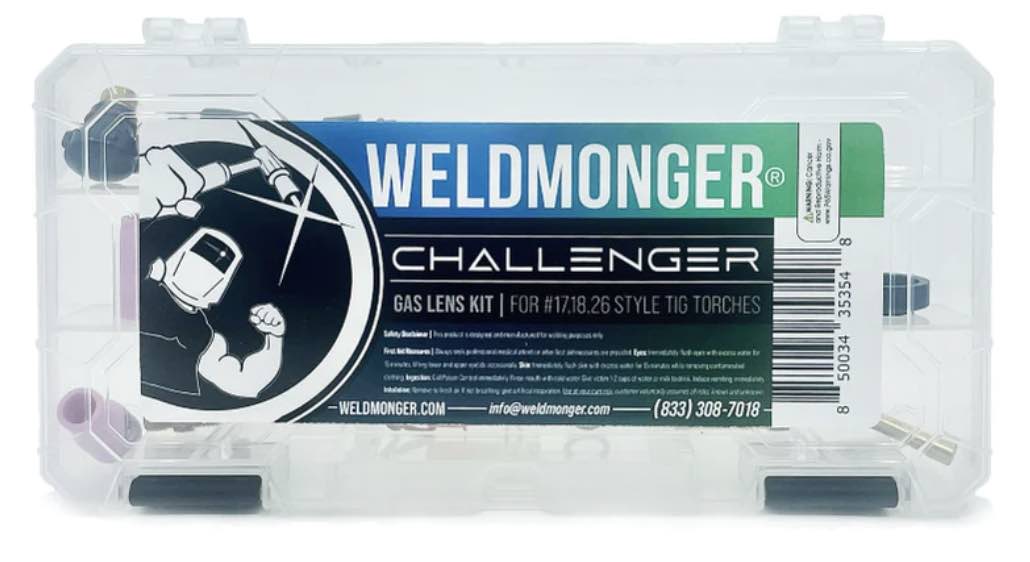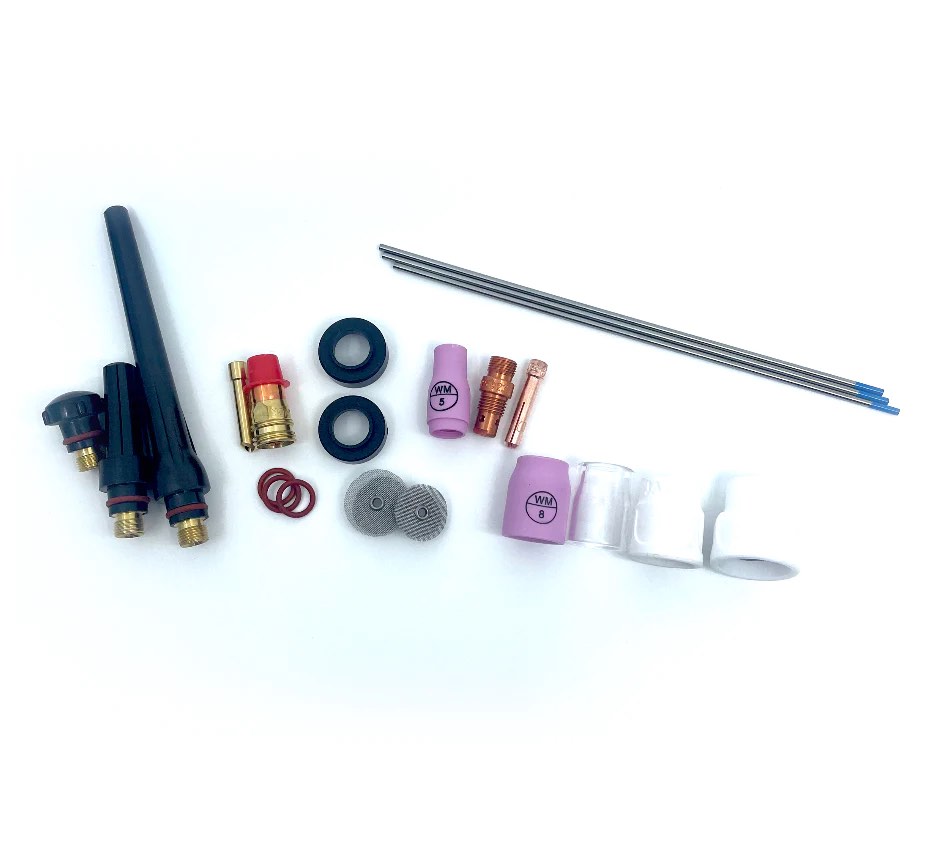Removing Heat Tint on Stainless Welds
...Introducing the New WeldMonger Challenger TIG kit that includes the most frequently used Cups.
Is removing heat tint from stainless welds even necessary? is it a waste of time?
There are some areas of industry that do not require removing heat tint but there are also some stainless parts in certain industries where the heat tint must be removed.
The heat tint or discoloration you get on stainless steel welds is an oxide film that reflects light in a way that shows colors.
Those colors are pretty but they do not provide the same corrosion resistance as the layer of stainless steel underneath.
Certain divisions of industry like food service and pharmaceutical might require a treatment after welding to remove the heat tint and also any free iron that might be left behind from shop dust, grinding, or cross contamination from using wire brushes, flap discs, etc that had been used on carbon steel.
Two main surface treatments used to remove heat tint oxides and free iron are passivation and electropolishing.
Passivation of stainless steels often involves either a bath using a nitric acid solution or a pickling paste that contains nitric and sometimes even more hazardous acids like hydrofluoric.
Electropolishing utilizes an electric current and so can be effective using milder acid mixtures like phosphoric and citric acid mixtures.
More on Heat Tint and Discoloration of Stainless Steel welds
Heat tint on stainless steel occurs when the material is heated to high temperatures, causing oxidation on the surface.
This heat-induced discoloration, typically showing as a rainbow of colors (blue, yellow, brown), forms an oxide layer.
While the tint itself is not harmful, it indicates that the protective chromium oxide layer that normally guards stainless steel from corrosion has been altered.
When stainless steel is heated, oxygen from the air reacts with the chromium in the steel, forming chromium oxide. The heat tint shows areas where the oxide layer is thicker and has lower chromium content.
The affected regions have reduced corrosion resistance because chromium, which is crucial for the formation of the protective layer, is depleted from the surface.
In environments where stainless steel is exposed to corrosive elements, such as chlorides or moisture, the areas with heat tint become more prone to localized corrosion, including pitting and crevice corrosion.
This is why it's essential to remove or clean off heat tint through methods such as electro polishing, chemical passivation, or pickling to restore the material's corrosion resistance.


